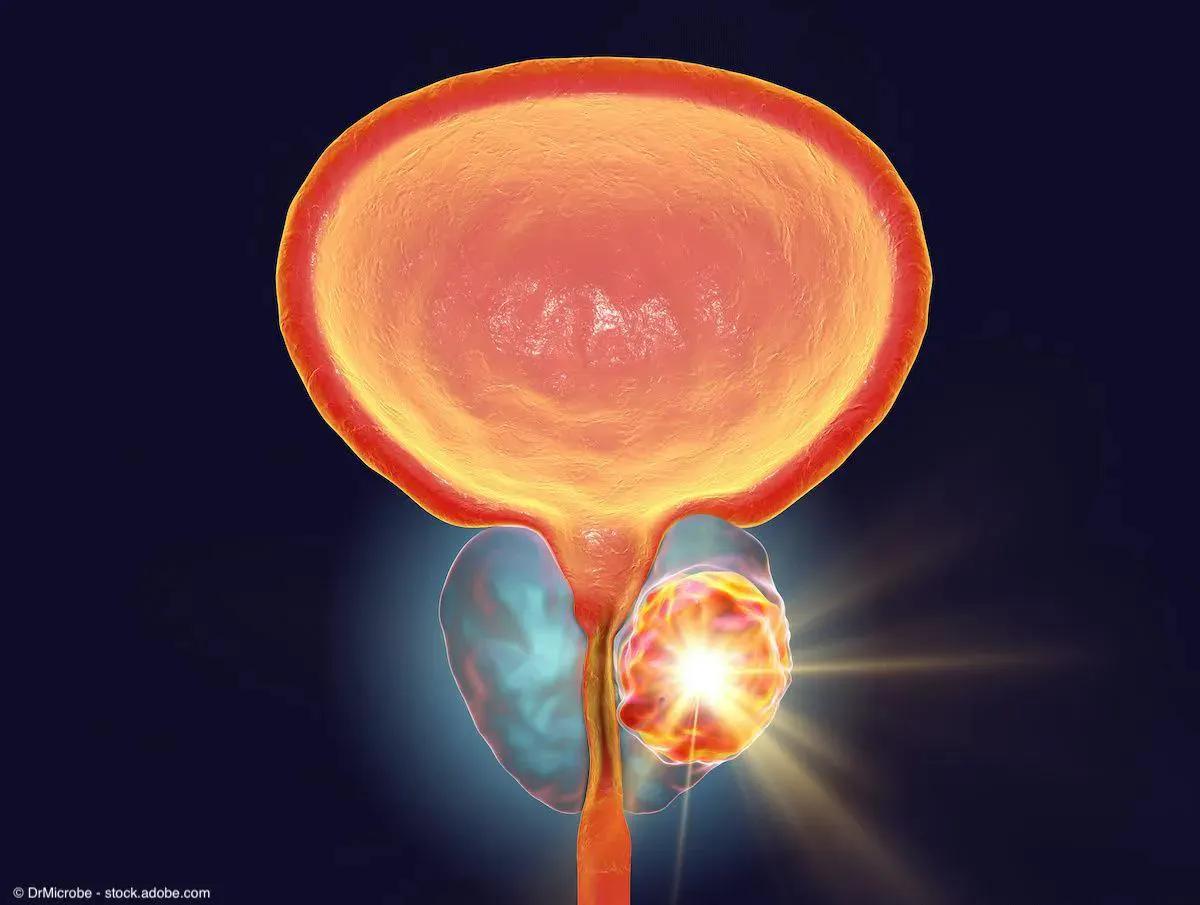Targeted radiation plus systemic therapy combo shows promise in mHSPC
"The combination of highly potent systemic therapy and targeted radiation has shown impressive results in maintaining low PSA levels after testosterone recovery, offering hope for improved outcomes in these patients, but further studies are still needed to determine the best regimen," says Amar U. Kishan, MD.
The addition of dual androgen receptor pathway inhibitors (ARPIs) and prostate-specific membrane antigen (PSMA) PET/CT–guided, metastasis-directed stereotactic body radiotherapy (SBRT) to intermittent androgen deprivation therapy (ADT) was well-tolerated and achieved durable disease control in patients with oligorecurrent metastatic hormone-sensitive prostate cancer (mHSPC), according to data from the phase 2 SATURN study (NCT03902951) published in European Urology.1
The median progression-free survival with the treatment combination was 19.3 months.

Overall, data showed that 50% of patients treated with 6 months of androgen annihilation therapy (AAT) plus SBRT were recurrence-free at 6-months following testosterone recovery with AAT, with PSA levels of less than 0.05 ng/mL.
“In contrast, without this combined treatment approach, we would expect approximately 1% of patients to have no evidence of disease at the 6-month stage. These results suggest a substantial improvement and strongly suggest there can be a meaningful impact—namely, delaying the need for hormonal therapy and thus without the significant side effects of it—by attacking metastatic prostate cancer early,” said senior author Amar U. Kishan, MD, in a news release on the findings.2 Kishan is a professor of radiation oncology at the David Geffen School of Medicine at the University of California, Los Angeles.
The median progression-free survival (PFS) with the treatment combination was 19.3 months, and the median eugonadal PFS was 11.4 months. The PFS rate was 69% at 1 year and 36% at 2 years. Patients who had received no prior hormonal therapy were less likely to experience recurrence compared with those who had, according to multivariate analysis.
Among the 13 patients who experienced disease progression, 8 developed PSMA-avid metastatic disease, with a median time to progression from AAT initiation of 16.1 months. Additionally, 6 patients were re-treated at a median time of 17.8 months from AAT treatment initiation. One patient developed castration-resistant prostate cancer.
Overall, the combination was well-tolerated among patients, with 93% completing the treatment regimen of metastasis-directed SBRT plus 6 months of hormone therapy. Specifically, 20 patients completed ADT with dual ARPIs, 5 completed ADT with 1 ARPI, and 1 patient completed ADT monotherapy. Grade 2 and grade 3 toxicity from AAT was experienced in 21% of patients each.
In total, the prospective, single-arm phase 2 study enrolled 28 patients with oligorecurrent mHSPC after radical prostatectomy involving 1 to 5 nonvisceral, extrapelvic metastases on PSMA PET/CT. Patients included in the study received short-course (6-month) androgen annihilation therapy (dual ARPIs plus ADT) in addition to PSMA PET/CT-guided SBRT.
Median follow-up of patients was 20 months. The primary end point was the percentage of patients who achieved a PSA less than 0.05 ng/mL 6 months after their serum testosterone recovered following AAT.
Kishan concluded in the news release,2 "This study marks a crucial step forward in managing recurrent metastatic prostate cancer. The combination of highly potent systemic therapy and targeted radiation has shown impressive results in maintaining low PSA levels after testosterone recovery, offering hope for improved outcomes in these patients, but further studies are still needed to determine the best regimen.”
References
1. Nikitas J, Rettig M, Shen J, et al. Systemic and tumor-directed therapy for oligorecurrent metastatic prostate cancer (SATURN): Primary endpoint results from a phase 2 clinical trial. Eur Urol. 2024:S0302-2838(24)00058-7. doi:10.1016/j.eururo.2024.01.021
2. Attacking metastatic prostate cancer early with combination treatment approach improves outcomes in preliminary study. News release. UCLA Health. Published online and accessed March 18, 2024. https://www.uclahealth.org/news/attacking-metastatic-prostate-cancer-early-with-combination
Study finds disparities in management of mCSPC
April 17th 2024“These findings suggest that guideline recommended treatment intensification remains low for patients with mCSPC in both Medicare and the Veterans Health Administration, but especially for Black patients,” says Daniel J. George, MD.
